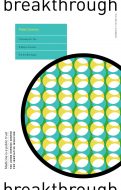
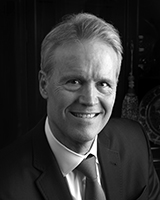
David B. Hellmann,
M.D., M.A.C.P.
What would you do if we won the lottery, and you got to pick how we spent the money? If you got to call the shots, how would you have us take ours?
This is the question I asked about 70 people at our CIM retreat in September. This was an audience well equipped to answer such a question – smart, creative physicians, nurses and scientists from all levels of Johns Hopkins, ranging in experience from hospital presidents to young house officers. We based the idea of “taking our shot” on the Broadway musical, Hamilton. What will our shot be? We got some great ideas (Page 20). Now we are working on making them happen.
Our mission begins and ends with people: helping our patients and neighbors, and helping our doctors provide world-class care for them. One important part of that is Precision Medicine. To anyone who has read Breakthrough or knows the CIM, this is not a new term; it has been one of our goals since the beginning. This is an idea that blends clinical excellence – diagnosing and treating the patient’s illness with discernment – and science that hasn’t been possible until recently (see Page 2). Basically, if you have 12 people in a waiting room, all with the same illness, precisely what are you dealing with? It’s not just one illness, in which cookie-cutter treatment works effectively for everyone. But it’s also not 12 individual illnesses requiring 12 different treatments. Instead, most likely, there are subgroups of people who have the same symptoms and perhaps the same things going on at the molecular level. This is how we need to be treating these people – based on their particular type of disease.
Because we believe in approaching our patients, and our practice of medicine, from many different angles, we are happy to share with you two stories involving art. Thinking like an artist (Page 14) may help doctors approach their patients’ illnesses in a different way, and art itself (Page 12) may give young doctors a new way to connect with their patients, to think about what it might be like for them, how their illness is affecting them.
Speaking of many different angles, that’s the key to our multidisciplinary research and treatment Cores. At the Amos Center for Food, Body & Mind, doctors and scientists are conducting research trying to figure out exactly why the Paleo diet helps; particularly, how it affects the microbiome in the gut (Page 6).
In other exciting news, our Miller-Coulson Academy is helping excellent clinicians achieve academic promotion (Page 10). We check in with one of our residents, Francoise Marvel, whose idea for an app to help heart attack patients recover caught the attention of Apple (Page 18). And finally, as committed as we are to thinking outside the box, sometimes we need to put the box away (Page 16), as one of our IAB members, Bo Shao, discussed with Nobel Laureate Adam Riess.
I hope you have a wonderful Holiday season.

Aliki Perroti Professor of Medicine;
Vice Dean, Johns Hopkins Bayview Medical Center;
Chairman, Department of Medicine
Don Willett November 19th, 2016
Posted In:
 “We live in absolutely extraordinary times,” says Antony Rosen, M.D., Vice Dean for Research and Director of the Division of Rheumatology. What makes our time particularly remarkable, he adds, is our ability to analyze huge amounts of data, to recognize patterns, and to absorb new information very quickly. “That’s a big change, and a powerful force.”
“We live in absolutely extraordinary times,” says Antony Rosen, M.D., Vice Dean for Research and Director of the Division of Rheumatology. What makes our time particularly remarkable, he adds, is our ability to analyze huge amounts of data, to recognize patterns, and to absorb new information very quickly. “That’s a big change, and a powerful force.”
So is our connectivity – humans with humans, and devices with devices. “This enormous web of interconnected things is changing the way that we generate, capture, aggregate, analyze, and deploy data, and it’s changing the way we’re making decisions.” There has also been what Rosen calls a revolution in measurement. “Even 10 years ago, to measure and analyze tissue, blood, cells, DNA, RNA, protein, lipids, or metabolites – that required large amounts of material, and was very labor-intensive.”
When scientists look at something and study its chemical makeup, the object of study is called an “analyte.” And not too long ago, scientists could only investigate one or a few analytes at once. No more: Now they can measure almost any analyte – and not just a paltry one or two, but tens of thousands all at once – and sample sizes are tiny; Rosen calls them “vanishingly small,” in fact.
“That remains our calling, to bring science to the caring practice of individuals with disease, for prevention, and monitoring, and therapy, and cure. The tools of the modern era are greatly affecting our ability to accomplish those goals, and that’s what we are calling Precision Medicine.”
Now hang on just a darn minute, you may be thinking: This is the Center for Innovative Medicine, where the patient is the top priority, and here we are talking about the super powers of machines in a way that might even sound creepy if you’re the kind of person who prefers to keep technology at arm’s distance. What does this fancy science have to do with people?
Everything.
This is why Rosen is so excited. For starters: “Instead of needing large amounts of human tissue to make diagnoses, we can get away with tiny amounts of tissue. Instead of needing to cut into someone do a deep biopsy, we can sometimes access the same materials in the blood.” This is called a “liquid biopsy,” and for anyone who has endured a painful biopsy or spinal tap, the idea of getting information from blood or maybe even urine sounds like a big improvement.
So we’re looking at a revolution in precision diagnosis. Even better: we’re also looking at a new era of precision treatment. David Hellmann, M.D., founder of the CIM, “likes to say that when Johns Hopkins began, it unified the brain and the heart of medicine,” says Rosen. “That remains our calling, to bring science to the caring practice of individuals with disease, for prevention, and monitoring, and therapy, and cure. The tools of the modern era are greatly affecting our ability to accomplish those goals, and that’s what we are calling Precision Medicine.”
It’s the anti-cookie cutter approach.
Rosen, who has been part of the CIM since it began, has been a leading advocate for precision medicine; he pioneered it in Rheumatology, with the goal of expanding it – and it’s happening. With the partnership of Scott Zeger, Ph.D., professor of biostatics and medicine, and with funding from Johns Hopkins University President Ron Daniels, he has developed a new program called Hopkins InHealth, with the goal of delivering “medicine that’s precisely for you.” Also, with funding from Hopkins Dean and CEO Paul Rothman, M.D., and Johns Hopkins Hospital President Ron Peterson, Johns Hopkins Medicine is establishing Precision Medicine Centers of Excellence (PMCOEs) throughout the institution. Rosen sent out a call for proposals and was “blown away” by the number of high-quality ones he received. So far, he has identified eight new PMCOEs, with plans to fund another 10 in the near future.
It’s the anti-cookie cutter approach, and for the first time, thanks to new technology, it is possible on a wide scale. Here’s an example: we know that not all prostate cancers are the same – even if the cancers are technically the same stage and grade. At last count, there are, in fact, 27 different varieties of prostate cancer, depending on which particular genes are involved. This doesn’t matter so much if the cancer is caught early and is curable with surgery or radiation. But with metastatic cancer, precision treatment matters a great deal. Some prostate cancer involves the same faulty genes that are involved in breast cancer; other varieties have more in common genetically with colon cancer. It makes sense, then, that to tell a patient, “Here’s your chemo,” as doctors used to do, would be to do that man with prostate cancer a huge disservice. Some men will be helped by the chemotherapy, and some won’t. Now we know why: because they don’t all have precisely the same disease.
To tell a patient, “Here’s your chemo,” as doctors used to do, would be to do that man with prostate cancer a huge disservice. Some men will be helped by the chemotherapy, and some won’t. Now we know why: because they don’t all have precisely the same disease.
This scenario repeats itself throughout medicine. “We know that even though you can aggregate diseases together under one label, many diseases are heterogeneous,” says Rosen. “If you have a group of 100 people with the same disease, they really should be divided into homogeneous subgroups. It’s important to identify these subgroups and understand what the disease mechanisms are that impact them in specific ways.”
Picture, if you will, a box of crayons. In your basic Crayola 64 pack, you might have 10 crayons that could be considered blue. But some of them, like teal and turquoise, are also part of the green family, and cadet blue actually looks pretty gray.
Understanding which shade of blue, or which subtype of disease a patient has, will lead to custom-tailored treatment. This idea, Rosen points out, is not new at Hopkins. “The way that’s been manifested here has been that wise, experienced clinicians who take great care of their patients know intuitively that not all of these patients with certain diseases are alike. They start recognizing subgroups of people who are homogenous based on phenotype – how the disease presents – and trajectory – what it looks like as time goes by.”
Picture, if you will, a box of crayons. In your basic Crayola 64 pack, you might have 10 crayons that could be considered blue. But some of them, like teal and turquoise, are also part of the green family, and cadet blue actually looks pretty gray. Understanding which shade of blue, or which subtype of disease a patient has, will lead to custom-tailored treatment.
At multidisciplinary Centers of Excellence (Hopkins has many of these), clinicians not only recognize these subgroups of patients but study their blood and tissue samples; the patients are also partners in research. “In the context of great, patient-centered medical care, these centers are excellent frameworks for discovering subgroups and the mechanisms that underlie their disease, with the hope of finding targeted treatment,” says Rosen. “We already have many centers, informally organized, but we recognize the opportunity to formalize what we really do well, and provide resources to enable these centers to form a learning health system.”
If these new PMCOEs live up to their promise, they may also offer proactive medicine. “Clearly, as medicine evolves over the next decade, not only are there going to be people who have a disease now, but we will have a better understanding of who’s at risk to get it, who’s already in the process of getting the disease – and intervening, perhaps before the disease causes damage. The way to do that is to follow patients in partnership, in a learning health system, to collect their data, to follow their trajectories over time, find the tools that will help us predict the course of their illness, and intervene appropriately.”
Don Willett November 19th, 2016
Posted In:
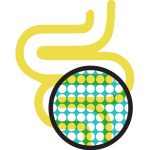
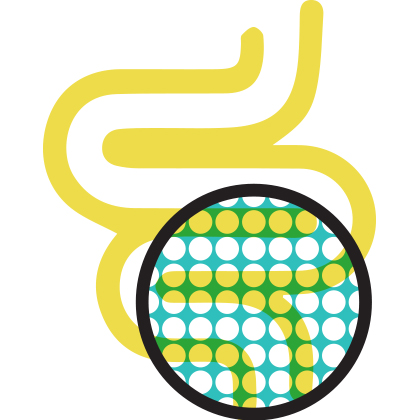 “We listen to our patients,” says Kimberly Harer, M.D., gastroenterology fellow, at the Amos Center for Food, Body & Mind, a CIM initiative. That’s why, when patients who have irritable bowel syndrome (characterized by constipation, diarrhea, and nausea, it also can include anxiety or depression) reported that they have been doing better after changing to a Paleo diet, the Amos Center doctors paid attention – and then Harer designed a study to answer some important questions, including:
“We listen to our patients,” says Kimberly Harer, M.D., gastroenterology fellow, at the Amos Center for Food, Body & Mind, a CIM initiative. That’s why, when patients who have irritable bowel syndrome (characterized by constipation, diarrhea, and nausea, it also can include anxiety or depression) reported that they have been doing better after changing to a Paleo diet, the Amos Center doctors paid attention – and then Harer designed a study to answer some important questions, including:
Does the Paleo diet, basically, eating lean meats, nuts, fresh fruits and vegetables – foods our Stone Age, hunter-gatherer ancestors could have eaten – make a difference?
If it does, then why? And how, exactly?
What happens to the microbiome – the countless bacteria that live inside the gut – when you stop eating dairy, processed sugars and carbs?
In the study, for two weeks 40 patients with IBS will be randomly assigned to eat either a Paleo diet or a standard, healthful diet. Harer and colleagues including epidemiologist Noel Mueller, Ph.D., will be looking at many things in these study participants, including “how the diet affects their GI symptoms, their quality of life, their vitality,” says Harer. In people who have been experiencing anxiety or depression, the investigators will look for changes in these symptoms, as well. They will study blood samples and patient responses to questionnaires about their health, and then, looking at the bacteria in stool specimens, the scientists will analyze the gut “microbiome” before and after.
Does the Paleo diet, basically, eating lean meats, nuts, fresh fruits and vegetables – foods our Stone Age, hunter-gatherer ancestors could have eaten – make a difference? If it does, then why? And how, exactly?
Let’s just take a moment to reflect on the concept – still fairly new in research – of a microbiome: It’s a small ecosystem made up of bacteria; this is more complex than it sounds. Just as the earth has its own ecosystems – tundra, tropical rainforests, grasslands – your body has them, too. Except instead of plants, these microbiomes are populated by bacteria: dozens of them, picky little cliques that only thrive in one particular spot. For example, the bacteria on the inside of your elbow are different from the bacteria on your face – and even on your face, the bacteria on the bridge of your nose are different from the bacteria between your nose and mouth; and those bacteria are different from bacteria on your chin.
But the gut takes it to another level; it is the microbial mother lode. In numbers alone, it’s intimidating. “There are trillions of microbiota (tiny habitats) in the gut,” says Mueller. And get this: All of those bacteria in all those micro-habitats have their own genes and their own genomes, which scientists now know how to sequence. “There are 100 to one more microbial genes than in your own human genome.”
This is why scientists at the Amos Center are convinced that the microbiome has an important influence on our health. It’s not just numbers, it’s sheer mass: All those bacteria that live inside our gut, if you somehow got them all together in one lump, would weigh and take up about as much space as your brain – three or four pounds. Trying to get a handle on that would be overwhelming without sophisticated computers and software, sequencing technology, and bioinformatics tools that allow scientists to recognize patterns and identify gene signatures. What they’re doing, in addition to taking care of patients, involves metagenomics (studying the micro-environmental genomics), proteomics (looking at all the proteins these bacteria make), and metabolomics (studying the set of metabolites, molecules involved in metabolism). Whew!
It’s not just numbers, it’s sheer mass: All those bacteria that live inside our gut, if you somehow got them all together in one lump, would weigh and take up about as much space as your brain – three or four pounds.
Because the study of the gut’s microbiome is still so new, nobody is sure what it’s supposed to look like, and how the gut flora relates to symptoms. “Maybe we won’t ever be able to define what is the normal gut microbiome,” says Mueller. “Normal might be different for everybody – just as there are deciduous and coniferous forests. Both can be healthy and have very different species living within them.”
Even in identical twins, Mueller continues, the bacteria in the gut can be very different. It is not unheard of for one twin to have a normal weight, and one to be obese.
Already, at many hospitals gut doctors are waging war with bacteria, successfully treating patients who suffer debilitating diarrhea from recurrent Clostridium difficile (C.diff) colitis with fecal microbiota transplants. Basically, uninfected fecal material from a relative with healthy gut bacteria is inserted into the patient’s colon, the good bacteria overwhelm the bad bacteria and the C.diff. is conquered.
In mice, Mueller notes, scientists have found that if they take the microbiota from the fecal sample of an obese individual and inject it into a germ-free mouse, that germ-free mouse will start to become overweight, too. “The phenotype of obesity can be replicated just through the sharing of bacteria,” he says. There is a lot of evidence to suggest that gut bacteria play a huge role in diseases of the metabolism – which also suggests that if these bacteria can be changed, there is great potential to improve someone’s health.
But first the scientists need to figure out the key players in this bacterial cast of trillions. Imagine the difficulty, on a smaller scale, of putting a face to every name in the New York City phone book, and then maybe figuring out who among all those people are community leaders – local officials, pastors, baseball coaches, teachers – and how they influence others. You might have a huge list of names and some idea of significance, but mostly glimmers in the darkness. Oh, and one more thing: that whole population could turn over fairly quickly. If you get sick and take antibiotics, samples of your gut bacteria would bear little resemblance to samples taken a few weeks earlier. So just when you start to get a handle on the cast of characters, your theater program might be out of date.
Certain families of bacteria thrive on a diet full of macaroni and cheese, soda, and ham sandwiches. Entirely different bacteria could show up if that diet changes to lean meat, nuts, berries, and veggies.
Finally, it’s not even “just” a matter of identifying which bacteria are present in the gut, but “how they’re breaking down the food we ingest,” says Harer. In this study, “we will look at the microbiome at three different time points. First, the baseline, before the diet changes; then, after the Paleo or study diet.” And then one more time: after participants go back to eating whatever they used to eat for four weeks. Blood samples will be taken after that four-week period, as well, and patients will fill out questionnaires to report any change in their symptoms.
“If there are differences in the blood and the stool samples, it will be interesting to see if those correlate with changes in their symptoms,” says Harer. “And we are very interested to see whether reverting back to their old diet causes the former symptoms to come back, or whether there are lasting changes.” Certain families of bacteria thrive on a diet full of macaroni and cheese, soda, and ham sandwiches. Entirely different bacteria could show up if that diet changes to lean meat, nuts, berries, and veggies. Which raises another question: If someone gets better with the Paleo diet, “what part is the beneficial part? Is it the lower carbs? Is it the increase in plants, or in protein content? Is it cutting out gluten?” Or is it some new, beneficial bacteria that have taken precedence in the gut?
It’s important to remember that “the microbiome is just part of the study,” Harer continues. “The question is, does this diet improve symptoms in IBS patients? Unfortunately, there is a huge unmet need in these patients, because there are few effective treatments. That’s why at the Amos Center, we do our best to provide excellent clinical care, with gastroenterologists, allergists and immunologists, psychiatrists, nutritionists, and a whole team who approach the patient’s care from many different angles. Then we also have the opportunity to conduct research, to try and identify potential therapies for these people who are really suffering. They’re frustrated, at the end of their rope sometimes when they come to see us. We use everyone’s input to treat them holistically, and also to try new things.”
One of these new things is a diet so simple that – as the commercials put it – “a caveman could do it.” If the Paleo diet does indeed help make people with IBS feel better, understanding why it works at gut level is something we’re only beginning to have the scientific knowledge and tools to decipher.
The Amos Center is a CIM initiative, made possible with the support of Mrs. Courtney Amos and Mr. Paul S. Amos.
Don Willett November 19th, 2016
Posted In:
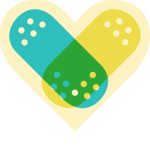
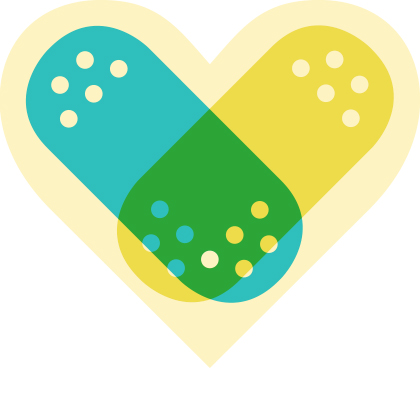
Duvuru Geetha, M.D., just got promoted from assistant professor to associate professor, and we’re extra happy to tell you about this because of the main reason her hard work was recognized by the Hopkins promotion committee: It’s not because she had huge grants or a big research lab.
It’s because she is a great doctor.
This is what we hoped for, way back in 2006 when philanthropist Mrs. Anne Miller first asked CIM founder David Hellmann, M.D., why there weren’t more great clinicians – a question that led to many important ventures, including the Miller-Coulson Academy for Clinical Excellence, which is changing the way clinicians are recognized and rewarded at academic medical institutions in the U.S. and Canada.
Geetha was inducted to the Academy in 2010, after submitting a comprehensive clinical portfolio – meticulously designed to measure the performance and contributions of the academic clinician (you can read more about it at http://www.hopkinscim.org/initiatives/miller-coulson-academy/history-of-the-academy) that included feedback from colleagues in medicine and nursing, by her patients, and by students, residents and fellows whom she has taught and mentored. Although it’s impossible to truly measure intangible factors like clinical acumen and caring – and the ability to teach other doctors to care about the patient – the portfolio comes very close.
“I think, what would I do if it were my own family?”
Over the last few years, Academy members have been working with Hopkins to develop a new track for promotion, called “Clinician With Distinction.” It is tailor-made for super-clinicians like Geetha; with her application, she included the hefty portfolio, which clearly impressed the committee.
“I did not know that this pathway even existed,” says Geetha. But having already gone through the rigorous application process for the Academy made it much easier to show Hopkins what her career was all about: “That portfolio proves that your focus is on clinical patient care; that’s your expertise – how you take care of patients, how you can be their advocate and at the same time have them take control of their disease and partner with them. There are components of the portfolio that measure your academic accomplishments like publications and presentations at national conferences. The application process also includes feedback from colleagues, trainees, and patients who recognize you as an excellent clinician, who can see that you think outside the box and are going above and beyond to provide the best care for them, and that you really are an expert.”
“They’re here to see me, not just watch me looking at the computer.”
Some of the feedback came from patients who have been in her care for 20 years. One said, “I would have died five years ago,” if not for Geetha’s expert care. Another has moved to Texas, but still comes back to Geetha for medical care. Geetha, a nephrologist, specializes in vasculitis, an autoimmune disease in which inflammation attacks blood vessels, and the kidneys can be hit hard by it. This means that she sees many of her patients, and their families, several times a year, and it’s the aspect of her specialty that she enjoys the most.
“The longitudinal relationships are very meaningful,” she says. “I view the patient as if I’m taking care of a family member, and if I have a difficult decision to make because there are so many options, I think, ‘what would I do if it were my own family?’” Geetha does her best to be accessible to her patients, and often gives her pager and cell numbers so they can reach her if need be. “I want to be available to them, and not just say, ‘see me in two or three months for a 30-minute appointment.’”
When Geetha got to read all the comments on her clinical work, although she was trying to do her best to take care of her patients, and to teach young doctors to be caring clinicians, “It actually felt quite good. When people feel they’ve been helped by you, that you made a difference in their life, for the trainees to say, ‘This is the kind of physician I want to be,’ to be the go-to person for this type of a problem – that’s the biggest satisfaction you can get.”
A brand-new pathway for promotion is tailor-made for super-clinicians.
Geetha also hopes to teach the next generation of physicians – most of whom have learned medicine in an age of electronic medical records and less time for personal interaction with the patient than ever before – to take a little extra time just to talk and connect to patients. “That personal touch is going away in many places,” she says. Before she walks into the room to see a patient, she reviews all the notes and charts ahead of time. Then, for the first few minutes of the visit, “I just sit face to face, making eye contact, and talking about what’s been going on. They’re here to see me, not just watch me looking at the computer.”
Don Willett November 19th, 2016
Posted In:

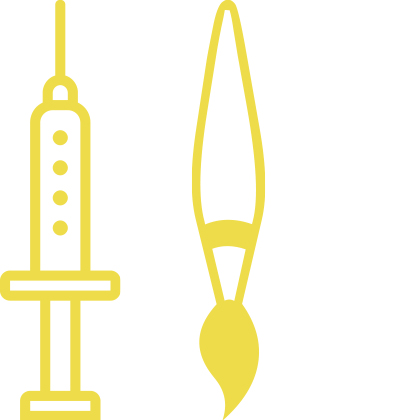 Claude Monet had cataracts. His paintings became more blurry and abstract. The colors he saw changed, too. The great French Impressionist put off surgery for years; when at last he could see better, he realized he had not painted what he thought he had – and he destroyed much of what he had done while his vision was off kilter. What must that have been like for him?
Claude Monet had cataracts. His paintings became more blurry and abstract. The colors he saw changed, too. The great French Impressionist put off surgery for years; when at last he could see better, he realized he had not painted what he thought he had – and he destroyed much of what he had done while his vision was off kilter. What must that have been like for him?
Andrew Wyeth was so fiercely inspired to capture “Christina’s World,” based on the struggles of a family friend, that he got up and left the dinner table (and his astonished in-laws) to make the initial sketches. His remarkable painting minimizes Christina’s physical disability, but so powerfully conveys his empathy and her isolation that it’s hard to look away.
If you are a young doctor – especially if you’re book-smart as a whip about science but haven’t spent a lot of time studying the humanities – thinking about Monet’s struggle and about the loneliness of Christina might help you understand, and care more about, what your patients are going through.
Psychiatrist Margaret Chisolm, M.D., believes this. A member of the Miller-Coulson Academy recognized for her compassion and empathy as a clinician, she hopes that art will open a window for young physicians into the challenges facing their patients – and help them see the person behind the illness. She has identified an amazing resource, nearly 150 insightful essays linking art and medicine written by James C. Harris, M.D., Director of the Developmental Psychiatry Clinic at Hopkins, to go with the cover art on JAMA Psychiatry.
“I just thought, wow, what a great opportunity,” says Chisolm, “to somehow use that to help teach young doctors.” She began by taking Hopkins psychiatry interns to the National Gallery of Art, individually or as many as three at a time. They’d spend an afternoon looking at three of the paintings that had been on the cover of JAMA Psychiatry, and later would read what Harris had to say about them. “Next, we would go to a gallery of their choosing and pick a painting or sculpture, and they would develop an essay of their own.” Chisolm held a poster session, where each intern presented an image of the art along with some thoughts on its greater significance. “I encouraged them to submit those essays to journals,” and one intern’s essay was accepted by the American Journal of Psychiatry.
“There were terminal diagnoses, amputations – and they never saw anyone talk to the patient about anything but the disease process itself.”
This was meaningful teaching. But it was also labor-intensive and not really workable on a larger scale – or easily brought to the patient’s bedside. So Chisolm and psychiatrist Susan Lehmann, M.D. – also a member of the Miller-Coulson Academy – with the advice of David Kern, M.D., M.P.H., the former chair of Internal Medicine at Bayview, and Scott Wright, M.D., Director of the Miller-Coulson Academy, began developing the curriculum as an app for a smart phone.
The idea is that a teaching team could use it to “spark conversations” among medical students, interns and residents, and with patients “around the meaning and impact of their illness,” says Chisolm. She envisions something like this: “We just saw this patient who had vision loss. We haven’t really talked with that patient about how that’s going to impact her day-to-day life; we’ve been focused on the diabetes and the medical side of things. Then the attending physician might enter into the app something like ‘vision loss,’ and get a module that would have an image and a little vignette related to the image. The clinical teacher wouldn’t need any background in art to be able to use this at the bedside.”
The teacher might show a couple of paintings in the “Water Lily” series by Monet, before and after he had cataract surgery. “The hope is that they would talk about what they think the impact of vision loss is going to be on our patient, and then later, the house officer or medical student would go back to the patient and talk more about the meaning of that illness, and want to have those kinds of conversations with other patients.”
Chisolm and Lehmann don’t see this as just a program for Psychiatry or Internal Medicine, or even just for Hopkins, but for other academic medical centers, too. “The Miller-Coulson Academy members, who are in all different departments, might be the people who could pilot our app, give us feedback, and help us refine it,” Chisolm says.
It’s not a main course; more like an uplifting protein snack to enrich the soul and build, over time, a physician who thinks about how the patient, as a person, is coping with illness.
They are designing the app so that each experience is brief – five to 10 minutes. They know how busy everyone is. It’s not a main course; more like an uplifting protein snack to enrich the soul and build, over time, a physician who thinks about how the patient, as a person, is coping with illness. “We don’t think it would be used every day, and certainly not with every patient,” says Chisolm, “but even once or twice a week.”
If this idea has as much promise as Chisolm believes it does, the app will “take on a life of its own,” as physicians share their own favorite works of art with others. Content will be rated, too, so users can see which pieces of art, and which stories about them, resonate the most.
Recently, Chisolm and Lehmann learned from a focus group of fourth-year medical students at Hopkins that “it was only on the Aliki service (an initiative begun by the CIM) and with one or two other physicians in the entire Hopkins system where they witnessed any discussion whatsoever about the impact of illness on the patient,” Chisolm says. “That was astounding to us, because in psychiatry, we talk about meaning all the time. There were terminal diagnoses, amputations – and they never saw anyone talk to the patient about anything but the disease process itself. It was disheartening, but it also showed us that here was an opportunity to do something about it.”
The key is to change the culture, “so talking about this is normal, and expected, and not something that’s rare and fluff. The arts are actually really great for prompting reflections and taking you outside of yourself.”
Many students come to medicine “from a very narrow science path,” she continues. “I’ve had residents not know about the Book of Job in The Bible, or Tolstoy’s Anna Karenina. They didn’t know who Frank Lloyd Wright was, or Woody Allen. There’s a lot of wisdom in the arts and humanities that we can learn from, besides just learning the wisdom of science and evidence-based treatments. It’s all about finding a way to connect.”
Don Willett November 19th, 2016
Posted In: